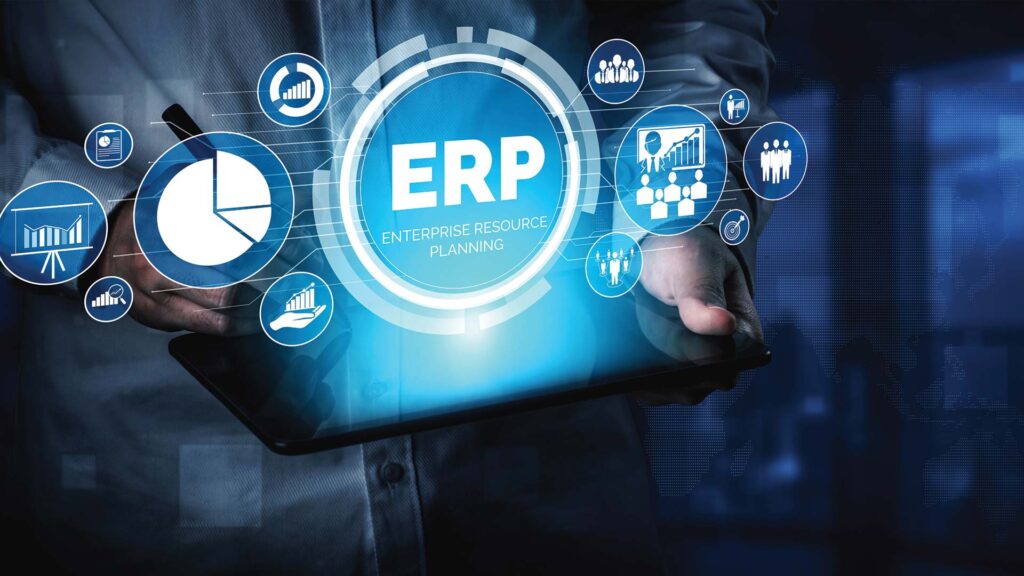The constantly evolving textile industry is challenged by the growing needs of the business, shifting market demands, and technological advancements. It is very vital for the businesses to keep abreast of the latest happenings and adapt the same to stay on the edge. Adapting to modern technologies, cutting-edge machinery, and data-driven systems and strategies can be overwhelmingly complex if not for the Enterprise Resource Planning (ERP) systems. The need for ERP softwares for the textile industry entails efficiently coordinating the production schedules, inventory levels, and logistics to save businesses grappling with the delays, stock-outs, and other inefficient processes.
Let’s delve into how textile ERP softwares offer a comprehensive approach to managing business processes, streamlining operations, and tackling the complexities of the industry’s persistent challenges.
Challenges faced by the textile industry: An overview
What is the role of ERP software in textiles and apparel industry?
You might be wondering why ERP? You have a hundred things on your plate from managing orders to restocking inventory to creating billing invoices. Multiple people are involved and with the increasing scale of operations, these processes are often hard to streamline without a proper system.
An ERP solution covers all key processes ranging from inventory management and tracking to finance operations to sales and marketing activities. By implementing an apparel ERP software your company can see improved employee satisfaction, customer relations, and streamlined operations due to centralized information management and availability, and accurate reports.
By consolidating all your business units into a unified information hub, ERP software enables efficient data collection, storage, management, and analysis from every corner of your enterprise. This enables smooth collaboration between departments, with everyone drawing from the same centralized database fostering better coordination and decision-making.
Let’s look into some of the ERP’s key benefits.
Production planning and scheduling:
Effective raw material management impacts the quality of finished goods thus increasing the organization’s brand value. With ERP software in place, real-time data is accessible on different aspects of the manufacturing process from sewing to coloring to printing and labeling guaranteeing effective quality control and successful execution. Fabric and inventory specifications are precisely monitored aiding in maintaining the quality and consistency.
Supply chain management:
Apparel supply chain management has to be optimized to bring clarity and efficiency to your business and streamline the operations enabling a transparent view across all the departments. Textile ERP ensures effective inventory management by reducing lead times with maximum production output and efficient resource utilization. It integrates various supply chain functions into a single platform providing real-time visibility, seamless data flow, and centralizing relevant data ranging from supplier information to production schedules reducing the risks of stock-outs or overstocking.
Integration across functions:
An effective apparel ERP software bridges the gap between all the departments and enables smooth cross functional collaboration. Bringing internal and external stakeholders, automating accounting and billing processes, and bringing various departments together is made easier with the ERP in place. The businesses can benefit due to improved decision making backed by better insights. Marketplace integration is another feature that aids in streamlining sales processes and automating shipment related tasks. This also helps in eliminating unnecessary costs and inaccurate data entry due to multiple and overlapping departmental functions.
Enhanced reporting:
ERP software with its advanced features aids in automated and comprehensive report generation making your business responsive to upcoming opportunities as you would be backed by real-time data and insights. With all data accessible at your fingertips all the departments work in tandem leading to an accelerated production cycle and an increase in efficiency.
Inventory and Quality Management:
Implementing a textile ERP brings in enhanced inventory management with high standards of accuracy and quality control. By utilizing barcode or QR code-based tracking systems you get precise and real-time inventory tracking helping in the effective management of materials at the roll or batch level allowing for accurate material categorization and specification management. Additionally, you can streamline the process of addressing supplier issues and thus maintain accountability.
Checklist for selecting appropriate Textile ERP for your business
Know your industry:
Evaluation of an apparel ERP software requires narrowing down the objectives, functionalities, and niche of your manufacturing business. It is imperative to look for features such as inventory management, resource monitoring, quality control, ease of integration across different departments, reporting and data management, production planning and scheduling and supply chain management. These are the unique requirements of the apparel and textile industry that aid in the smooth workflow of the production process.
Integration Capabilities:
ERP software must provide seamless integration with existing and new systems and processes. It should allow you to connect easily with third-party integrations, logistics partners, suppliers, and services vendors for smooth interaction. It should be compatible with implementing and ensuring that various standards of regulatory bodies and compliance are followed. Look for robust security features such as encryption, user authentication, log maintenance, intrusion detection system, and compliance regulations.
Cloud-based or On-premise:
Decide on what best suits your organization’s needs, whether a cloud-based or on-premise deployment. Cloud deployment offers you anywhere accessibility with less expensive IT infrastructure while On-premise gives more control over data security and customizations. Deployment options should take into consideration the business requirements, IT capabilities, and budgets and determine the best that aligns with the needs. Check for privacy, mobile and remote access, flexibility, and scalability before choosing the ERP for your organization.
Total cost of ownership:
It’s critical to include the total cost of ownership (TCO) in your decision-making process after weighing all other considerations. TCO includes all costs incurred during the course of installing and maintaining a software system. This covers implementation fees, software licenses, hardware (if required), training, and support expenses. While some suppliers may have a pay-as-you-go strategy for certain modules, others may charge extra for post-live support. Annual maintenance fees, which include bug patches, updates, and upgrades, may also play a role.
Vendor Viability:
ERP software selection is not just about features but is also about the user experience post implementation. While selecting your vendor evaluate how long the vendor is in business, customer reviews, support teams, and the company’s stability over the years. Before finalizing the vendor you should also get a demo to understand how the software suits your needs and specifications.
Conclusion:
As the textile industry navigates the complexities of production planning, supply chain management, and inventory control, ERP solutions provide a cohesive platform for managing these challenges effectively. By facilitating real-time data access, cross-functional integration, and accurate reporting, ERP software empowers businesses to make informed decisions, reduce operational bottlenecks, and ensure high-quality output. When selecting an ERP system, it is crucial to consider textile industry-specific functionalities, integration capabilities, deployment options, total cost of ownership, and vendor reliability. Embracing a well-suited ERP solution can significantly enhance the competitiveness and adaptability of textile industry businesses, ensuring they remain agile and responsive in an ever-evolving market.


